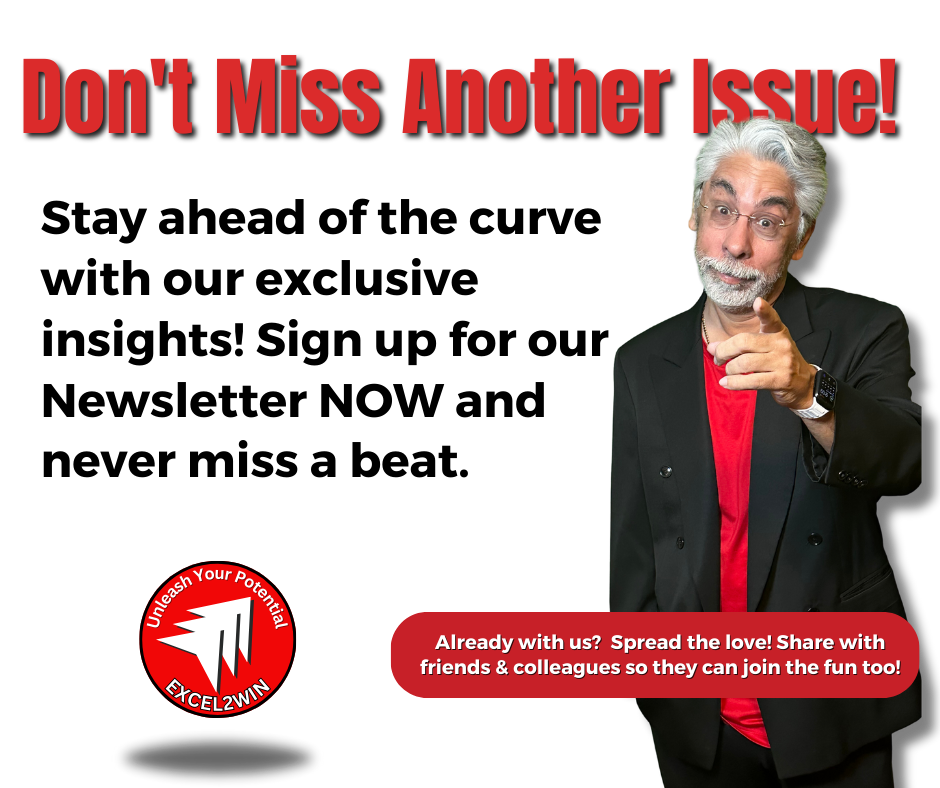Mastering Visualization: How to Achieve Your SMART Goals
Last week, we delved into the art of creating a SMART Goal Action Plan, a fundamental tool for professionals seeking to transform their aspirations into reality. This week, let’s enhance that roadmap by integrating a powerful yet often underutilized technique – Visualization. Visualization creates a mental image of your desired outcome in the context of goal setting. It’s not just about daydreaming but involves a deliberate and structured exercise to picture your success.
Visualize to Actualize: The Magic of Visualization
Imagine you’re standing at the peak of your career success. What do you see? What are you doing? Who is around you? How do you feel? This is visualization – a vivid, imagined experience, almost as accurate as the actual event. Visualization works by activating the brain like the actual performance of the action. It stimulates the same neural networks involved in the actual activity, thus preparing the mind and body for the act.
See It, Be It: Techniques to Visualize Effectively
Daily Practice: Dedicate a few minutes each day to close your eyes and imagine achieving your goals. Picture the process as well as the outcome.
Use All Senses: Engage all your senses. What do you hear, smell, or feel? The more detailed your visualization, the more effective it will be.
Emotional Connection: Feel the emotions you would experience upon achieving your goal. Joy, pride, or a sense of accomplishment can be powerful motivators.
Vision Boards: Create a vision board with images representing your goals. This visual representation can serve as a daily reminder and inspiration. I’ve written about this several issues back.
Why Visualization is a Game-Changer in Goal Setting
Visualization is not mere fantasy. It’s a strategy. Here’s why it’s crucial:
Enhances Motivation: Regular visualization keeps the end goal vividly in your mind, constantly reinvigorating your motivation.
Builds Confidence: Repeatedly visualizing success can build the confidence and self-belief necessary to tackle challenges.
Improves Focus: By regularly visualizing your goals, you reinforce what’s important, helping maintain focus amidst distractions.
Prepares for Challenges: Visualization can also involve imagining overcoming potential obstacles, thus preparing you for real-life challenges.
In our journey to understand the art of SMART Goal Action Plans, it’s enlightening to explore how visualization complements this process. Visualization, creating a mental image of desired outcomes, is not just for individual athletes or professionals; it’s a strategy embraced by successful entities across various fields.
The Integration of Visualization by Leading Figures and Corporations
Michael Phelps,1 one of the greatest Olympians, attributed much of his success to visualization. Phelps mentally rehearsed each race, visualizing every stroke and turn. This practice honed his physical performance and fortified his mental resilience, aligning with the Achievable and Relevant aspects of SMART goals.
Kobe Bryant’s2 legendary basketball career was marked by his use of visualization to maintain focus and confidence. Bryant’s practice of visualizing game-winning scenarios and his responses to various in-game challenges perfectly encapsulate the time-bound element as he mentally prepares for specific performance moments.
Serena Williams3 used visualization to manage nerves and maintain focus in tennis. Her technique of visualizing successful plays and overcoming challenging opponents resonates with the SMART principle of setting Relevant and Achievable goals.
General Electric (GE)4 has effectively utilized visualization, particularly data visualization, in its development programs. GE’s application of this technique in analyzing complex issues like healthcare and renewable energy showcases how visualization can transform abstract data into actionable insights, mirroring the Specific and Measurable aspects of the SMART framework.
The examples of GE, Phelps, Bryant, and Williams demonstrate the transformative power of visualization in achieving goals. Their success stories echo the essence of the SMART philosophy – clarity, motivation, and a structured path to achievement. By integrating visualization into your SMART Goal Action Plan, you’re not just setting a target; you’re mentally and emotionally aligning yourself with that objective, enhancing the likelihood of its realization.
Incorporating visualization into your action plan transforms it from a mere strategy to a dynamic, impactful journey toward your goals. As shown by GE’s innovative applications, Phelps’ and Bryant’s athletic dominance, and Williams’ mental fortitude, visualization is a universal key to unlocking potential and achieving success. Embrace this technique and let your SMART goals be the roadmap to a vividly imagined and fully realized future.
Stay tuned for more insights, and don’t forget to subscribe to the EXCEL2WIN Leadership Newsletter for practical tools to enhance your leadership journey.
In "Creative Visualization," Shakti Gawain presents a transformative approach to achieving personal goals and enhancing self-growth. Initially published in 1978, this work has become a foundational text in the self-help genre. It advocates for the power of mental imagery and affirmations in manifesting positive life changes.
Gawain defines creative visualization as the technique of using one's imagination to envision specific goals or desires as already achieved. This concept parallels the key idea in the article “Mastering Visualization: How to Achieve Your SMART Goals,” where visualization is described as "a vivid, imagined experience, almost as real as the actual event." Gawain's book guides readers through practical steps to visualize their goals, emphasizing consistency and emotional engagement.
In echoing the article's visualization and goal-setting insights, Gawain stresses the importance of detailed and regular mental rehearsal. She suggests that aligning one's emotions with these visualized goals can significantly boost motivation, akin to the article's assertion that "feeling the emotions you would experience upon achieving your goal can be powerful motivators."
Gawain's work goes beyond mere technique, delving into overcoming psychological barriers to personal growth. Her accessible and empathetic writing, enriched with exercises and real-life examples, makes "Creative Visualization" an invaluable resource for anyone looking to harness their imagination's power to achieve personal and professional objectives.






